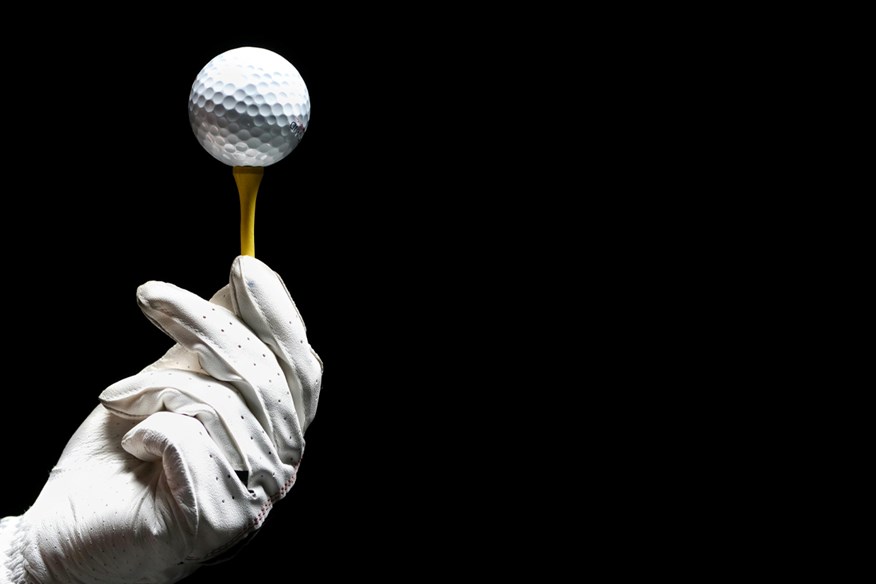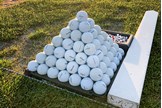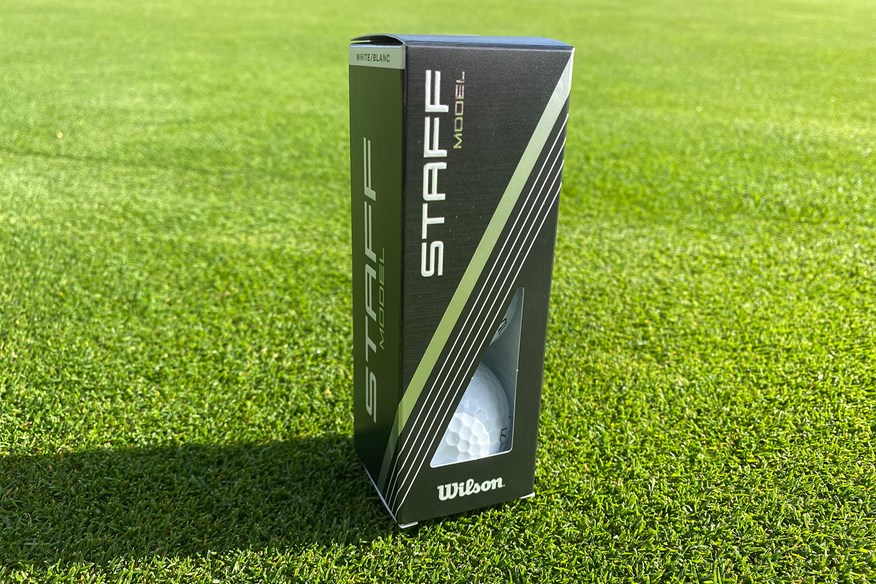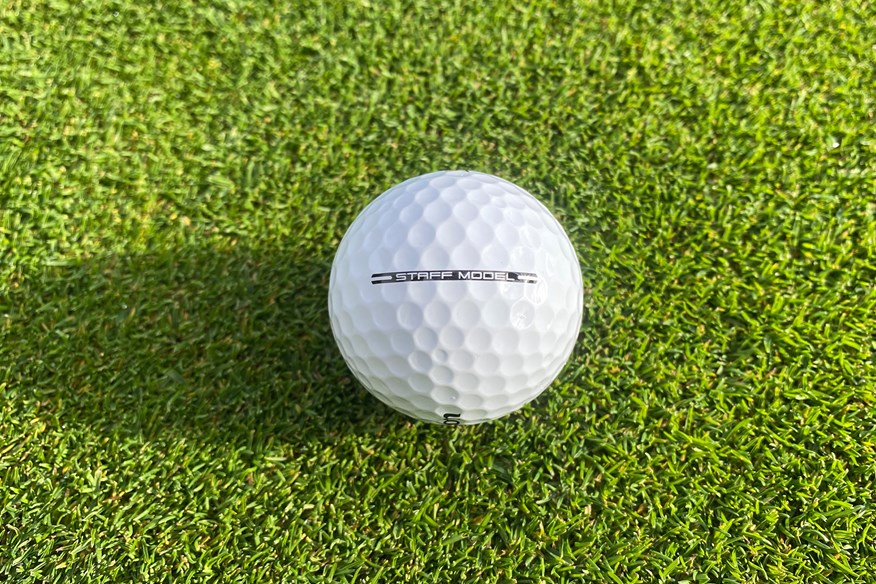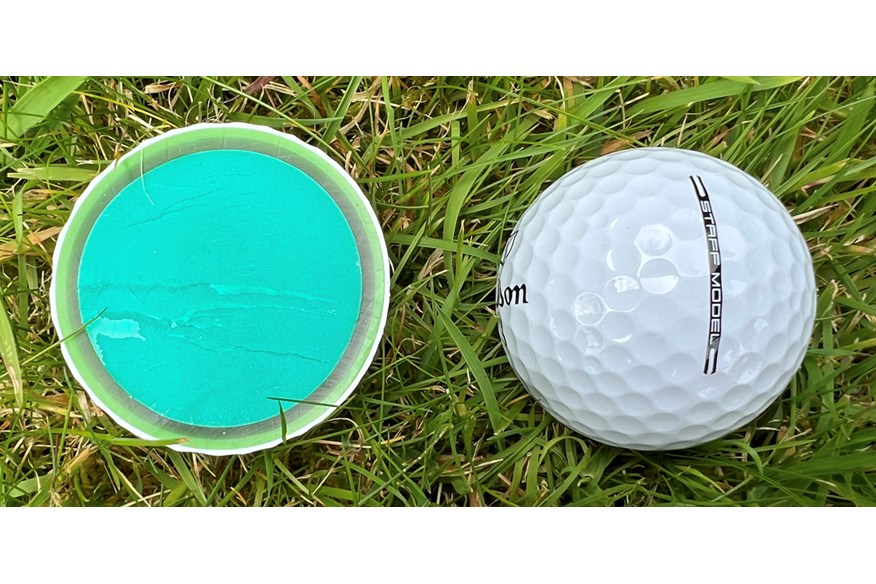Why aren’t more tour pros playing one of the best golf balls of 2024?
Last updated:
Are equipment deals preventing tour pros getting maximum performance from their golf ball?
Being a tour pro is a pretty sweet gig. You travel around the world in your private jet. Play fantastic golf courses. Make obscene amounts of money. Sign a few autographs for your adoring fans. Maybe feature in Netflix’s Full Swing. Then return to your mansion for a week off because you only work about 22 weeks a year. And, to top it all off, not only do you not have to buy your golf equipment, you’re actually paid by your equipment sponsors to use the free gear they give you.
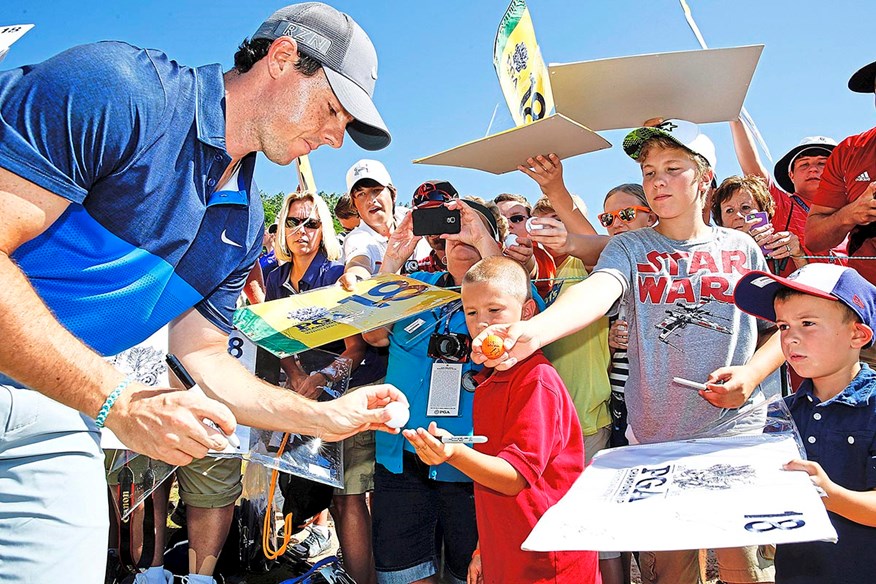
(Yes, yes, there’s the countless hours of practice and the gym sessions and the pressure to be a good role model and the complete lack of job security which means if your results drop off it all falls apart fast… but you get my point and there aren’t many golf fans who wouldn’t swap their current job for life on the PGA Tour.)
But that last point, regarding free equipment, does have its downsides. Being contracted to one manufacturer usually means you have to use a full bag of their equipment. Whereas amateur golfers can test as much different equipment as they fancy and choose the bits they like best from every brand, contracted tour pros are working with a much smaller selection. And those golfers sometimes miss out on a golf equipment gem because they’re tied to another brand.
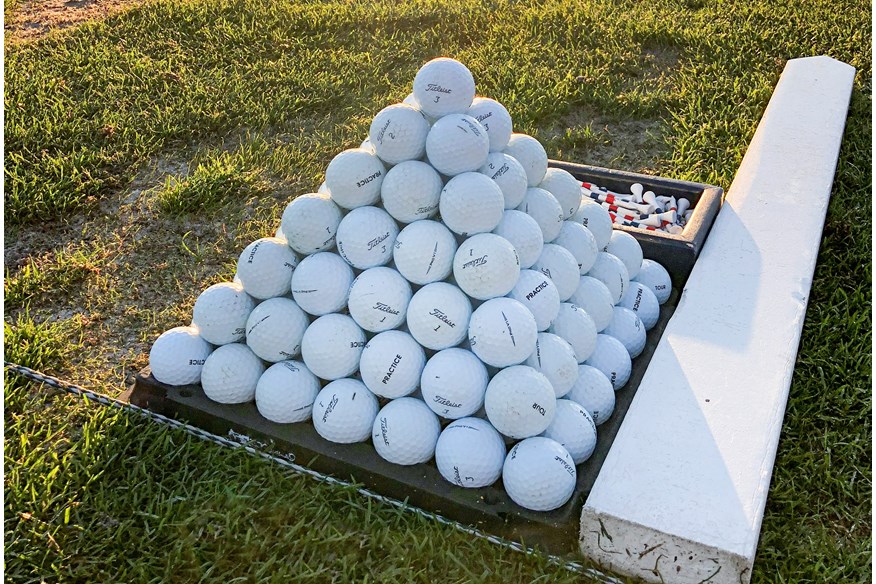
One such piece of equipment is the Wilson Staff Model (and Staff Model X) golf ball.
The recent Today’s Golfer Robot Golf Ball Test showed that it might just be the best golf ball for tour pros, and yet you’ll rarely see it in play on tour. Let’s look at what makes the Wilson Staff Model (and Model X) golf ball so good, why tour pros are missing out by not using it, and whether it could be the best golf ball for you.
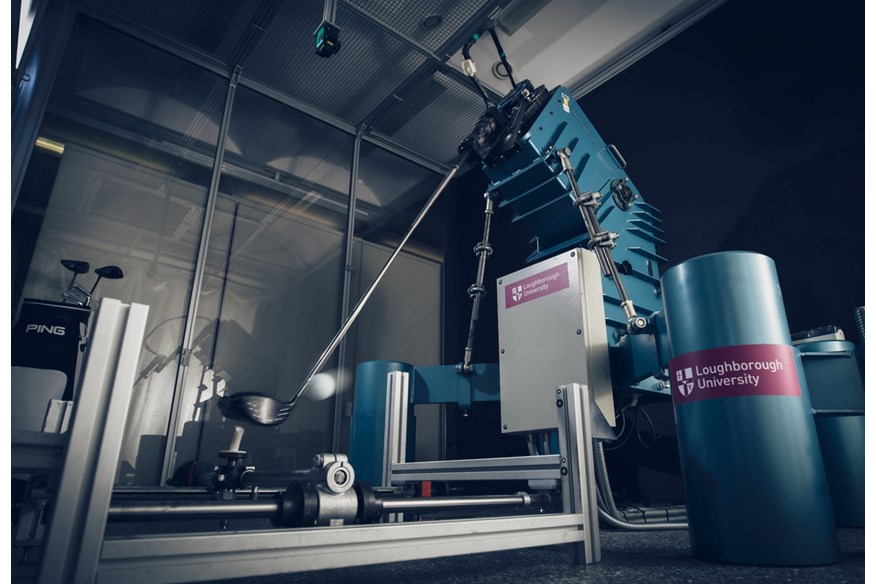
Why we use a robot to test golf balls
The recent Today’s Golfer Robot Golf Ball Test used a $100,000 robot to test golf balls across every conceivable metric. Every ball was tested with a driver at three different swing speeds – 85mph, 100mph, and 115mph – and with a 7-iron and pitching wedge.
We know from years of experience that a robot is the only way to guarantee the consistency of strike required to isolate the one variable we are trying to test: the performance of the golf ball. Even the world’s best golfers can’t hit a ball exactly the same way, time after time, which brings in other variables. That’s why every golf manufacturer uses a robot when developing golf balls and it’s why we use a robot to test those golf balls head-to-head.
Thanks to the robot’s adjustability, it’s possible to control lie angle, swing path, face angle, attack angle, impact location, hip rotation, and wrist action at swing speeds from 5 – 130 MPH. There simply isn’t a better swinger out there – not even among the world’s best golfers.
When picking the best golf balls, we use human testing – both on a launch monitor and on the course – to measure intangibles like sound and feel, but for pure data, a robot is a must-have.
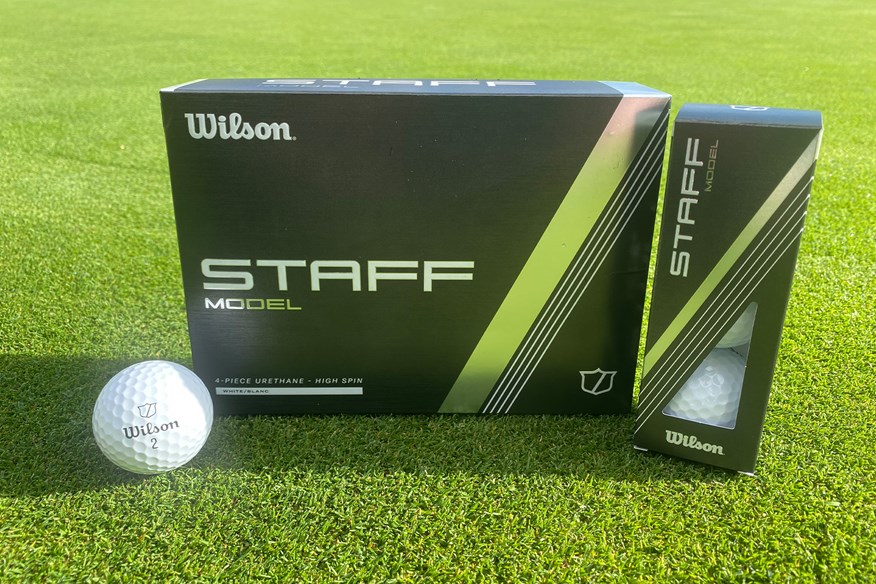
Why is the Wilson Staff Model golf ball so good?
Driver distance
The 115mph element of the Robot Test is particularly relevant for tour pros because the average driver clubhead speed on the PGA Tour is 115.96mph.
At the 115mph swing speed, the two Wilson Staff Model golf balls generated the fastest ball speeds in the entire test and ranked second and third for driver carry distance.
| Ball Speed (MPH) | Launch Angle (DEG) | Backspin (RPM) | Height (YDS) | Descent Angle (DEG) | Carry Distance (YDS) | Shot Area (SQ YDS) | |
| Callaway Chrome Tour X | 166.6 | 11.6 | 2155 | 59.7 (Highest) | 32.8 | 283.2 (1) | 31.2 (3) |
| Wilson Staff Model | 167.1 (2) | 11.4 | 2079 | 59.3 | 31.9 | 282 (2) | 50.5 |
| Wilson Staff Model X | 167.2 (1) | 11.3 | 2084 | 59.3 | 31.7 | 281.7 (3) | 38.6 |
| Callaway Chrome Tour | 166.5 | 11.3 | 2140 | 59.2 | 31.9 | 281 | 54.2 |
| Seed SD 02 | 165.8 | 11.4 | 2137 | 59 | 32.1 | 280.4 | 60.3 |
| Vice Pro Plus | 166.3 | 11.5 | 2064 | 58.8 | 31.7 | 280.3 | 35.4 |
| TaylorMade TP5x | 167 (3) | 11.1 | 2073 | 59 | 31.2 | 280.2 | 33.1 |
| Vice Pro | 165.8 | 11.4 | 2103 | 58.7 | 31.8 | 279.5 | 40 |
| Seed SD 01 | 165.4 | 11.5 | 2125 | 58.8 | 32.1 | 279.5 | 30 (2) |
| Vice Tour | 165.5 | 11.5 | 2072 | 58.4 | 31.8 | 278.9 | 52.4 |
| TaylorMade TP5 | 164.8 | 11.7 | 2080 | 58.3 | 32.1 | 278.3 | 86 |
| Titleist Pro V1 | 165.9 | 11.2 | 2066 | 58.3 | 31.1 | 278.1 | 29.5 (1) |
| Titleist Pro V1x | 166.7 | 11.1 | 2048 | 58.3 | 30.1 | 277.9 | 74.6 |
| Snell Prime 4.0 | 165.3 | 11.3 | 2111 | 58.3 | 31.4 | 277.8 | 63.4 |
| Snell Prime 3.0 | 165.4 | 11.5 | 2024 | 58.1 | 31.3 | 277.5 | 111.3 |
| Seed SD X1 | 164.7 | 11.3 | 2124 | 58.1 | 31.5 | 277 | 41.1 |
| Kirkland Signature V3 | 164.8 | 10.5 | 2296 (Highest) | 58.6 | 31.3 | 276.6 | 45.1 |
| Callaway Chrome Soft | 163.9 | 11.8 | 2079 | 57.7 | 31.9 | 276 | 174.8 (Largest) |
| Snell Prime 2.0 | 163.5 | 11.3 | 2226 | 58 | 32 | 275.7 | 130.5 |
| Vice Pro Air | 163.6 | 11.6 | 2082 | 57.5 | 31.6 | 275.2 | 60.3 |
| Srixon Q-Star Tour | 163.6 | 11.7 | 2077 | 57.5 | 31.6 | 275.1 | 69.4 |
| Srixon Distance | 164.7 | 11.4 | 2000 | 57.3 | 30.7 | 274.8 | 64.5 |
| Srixon AD333 | 162.7 | 11.4 | 2047 | 56.5 | 30.6 | 270.9 | 85.1 |
| TaylorMade SpeedSoft | 161.7 | 11.7 | 1984 (Lowest) | 55.8 | 30.5 | 269.1 | 33.3 |
| AVERAGE | 165.2 | 11.4 | 2095 | 58.3 | 31.5 | 277.8 | 62.3 |
The Callaway Chrome Tour X was the only ball that beat the two Wilson models for distance, which was one of the many reasons our Equipment Editor suggested it might well be the single best golf ball available.
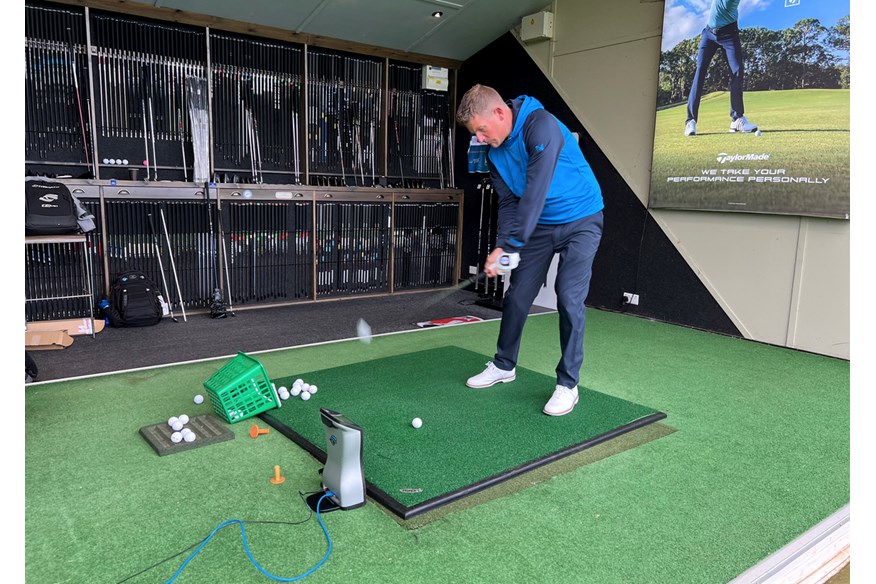
Iron and wedge performance
With a 7-iron, the Wilson Staff Model generated the highest ball speed of all 24 models tested, and both models produced a steeper descent angle than any other ball.
Descent angle is the key metric that determines how fast your ball stops when it lands on the green. If you’re playing tour-caliber golf courses, it’s incredibly important to be able to stop the ball as quickly as possible.
| Ball Speed (MPH) | Launch Angle (DEG) | Backspin (RPM) | Height (YDS) | Descent Angle (DEG) | Carry Distance (YDS) | Shot Area (SQ YDS) | |
| Srixon Q-Star Tour | 108.1 | 21.3 | 4985 | 32 | 44.8 | 156.5 (T1) | 7.2 (1) |
| Vice Pro Air | 107.6 | 21.5 | 4788 (Lowest) | 31.8 | 44.6 | 156.5 (T1) | 15.1 |
| Wilson Staff Model | 108.7 (1) | 21.1 | 5256 | 32.1 | 45.2 | 156.4 (3) | 13.3 |
| Vice Tour | 107.9 | 21.4 | 4967 | 31.9 | 44.9 | 156.3 | 17.2 |
| Seed SD 01 | 108.5 (2) | 21 | 5314 | 31.9 | 45.1 | 155.8 | 9.5 |
| Seed SD 02 | 108.2 (T3) | 21.1 | 5188 | 31.9 | 45 | 155.8 | 37.1 |
| Vice Pro | 107.7 | 21.1 | 5103 | 31.7 | 44.7 | 155.2 | 8.4 |
| Vice Pro Plus | 108.2 (T3) | 21 | 5379 | 31.7 | 45.1 | 154.9 | 9.9 |
| Snell Prime 4.0 | 107.2 | 21.1 | 4973 | 31.6 | 44.3 | 154.8 | 10.5 |
| TaylorMade TP5x | 108 | 20.7 | 5468 | 31.6 | 44.8 | 154.2 | 13.4 |
| Callaway Chrome Soft | 107.2 | 21.2 | 5173 | 31.4 | 44.7 | 154.1 | 18.5 |
| TaylorMade SpeedSoft | 107.2 | 21.2 | 5185 | 31.5 | 44.7 | 154.1 | 41.4 (Largest) |
| Callaway Chrome Tour | 107.7 | 20.8 | 5384 | 31.5 | 44.7 | 154 | 10 |
| Snell Prime 3.0 | 106.9 | 21 | 5145 | 31.3 | 44.4 | 153.5 | 24.6 |
| Srixon Distance | 107 | 21 | 5306 | 31.3 | 44.6 | 153.1 | 38.7 |
| Srixon AD333 | 106.9 | 21.1 | 5276 | 31.3 | 44.7 | 153.1 | 29 |
| TaylorMade TP5 | 107.7 | 20.7 | 5672 | 31.4 | 45 | 152.9 | 16.6 |
| Titleist Pro V1 | 107.5 | 20.7 | 5594 | 31.2 | 44.8 | 152 | 8.2 (3) |
| Wilson Staff Model X | 108.1 | 20.3 | 6084 | 31.3 | 45.2 | 151.8 | 7.8 (2) |
| Snell Prime 2.0 | 106.5 | 20.7 | 5461 | 31 | 44.4 | 151.4 | 8.7 |
| Seed SD X1 | 107.1 | 20.4 | 5771 | 31.1 | 44.7 | 151.3 | 15.8 |
| Titleist Pro V1x | 107.1 | 20.4 | 5835 | 31 | 44.7 | 151 | 8.3 |
| Callaway Chrome Tour X | 107.6 | 20.1 | 6193 (Highest) | 31 | 44.9 | 150.5 | 16.2 |
| Kirkland Signature V3 | 106 | 19.7 | 6109 | 30.4 | 43.9 | 147.8 | 17.2 |
| AVERAGE | 107.5 | 20.9 | 5400 | 31.4 | 44.7 | 153.6 | 16.8 |
The two Wilson balls reached that steep descent angle in slightly different ways. The Wilson Staff Model had a higher launch angle (21.1°) and medium spin (5,256 rpm), while the Wilson Staff Model X had a more penetrating launch angle (20.3°) but higher spin (6,084 rpm).
Control tends to be far more important to tour pros than distance when it comes to irons, but it doesn’t hurt that the Wilson Staff Model was also one of the longest golf balls with a 7-iron. Its carry distance of 156.4 yards put it just 0.1 yards behind the only two longer balls on the test.
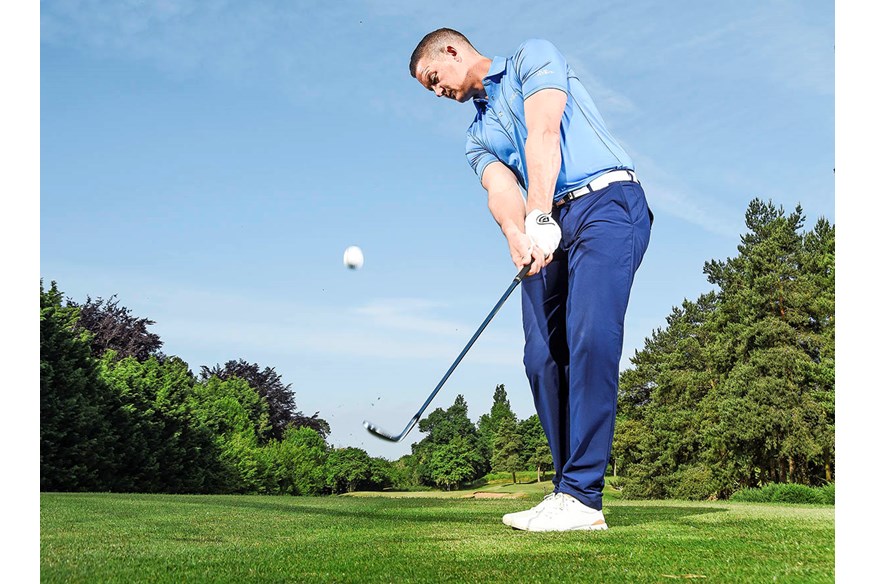
Speaking of control, the Wilson Staff Model X ranked fourth for backspin with a pitching wedge, while the standard Staff Model generated lower spin but still delivered the fourth steepest descent angle of any ball.
| Ball Speed (MPH) | Launch Angle (DEG) | Backspin (RPM) | Descent Angle (DEG) | Carry Distance (YDS) | L – R Dispersion (YDS) | Shot Area (SQ YDS) | |
| Callaway Chrome Tour X | 84.8 | 28.1 | 8080 (1) | 47.5 | 104.9 | 1.3 | 2 (1) |
| Titleist Pro V1x | 84.3 | 27.9 | 8046 (2) | 47.2 | 104.3 | 2 | 4.7 |
| Kirkland Signature V3 | 83.8 | 27.7 | 8043 (3) | 46.8 | 103.4 | 1.8 | 4.1 |
| Wilson Staff Model X | 85.1 | 28.5 | 7982 | 47.9 | 105.4 | 1.9 | 3 (T2) |
| Vice Tour | 84.7 | 28.4 | 7926 | 47.7 | 104.9 | 1.6 | 3.1 |
| Seed SD X1 | 84.6 | 28.7 | 7692 | 47.8 | 105.2 | 1.6 | 4.6 |
| Titleist Pro V1 | 84 | 28.7 | 7691 | 47.6 | 104 | 2.6 | 10.1 |
| Srixon Distance | 83.6 | 28.7 | 7636 | 47.5 | 103.6 | 3.9 | 11.7 |
| TaylorMade TP5 | 84.9 | 29 | 7617 | 48.3 | 105.7 | 1.8 | 6 |
| Snell Prime 2.0 | 84 | 28.3 | 7617 | 47.3 | 104.3 | 2.6 | 12 (Largest) |
| TaylorMade TP5x | 84.9 | 28.9 | 7606 | 48.1 | 105.7 | 3 | 8.1 |
| Callaway Chrome Tour | 84.9 | 28.8 | 7481 | 47.9 | 106 | 1.8 | 6.4 |
| TaylorMade Speedsoft | 84.2 | 29.2 | 7420 | 48.1 | 104.8 | 1.9 | 6 |
| Wilson Staff Model | 84.8 | 29.4 | 7329 | 48.4 | 105.8 | 1.7 | 3.7 |
| Srixon AD333 | 84 | 29.3 | 7309 | 48 | 104.5 | 2.8 | 10.5 |
| Seed SD 01 | 85 | 29.4 | 7275 | 48.5 | 106.3 | 2.1 | 4.2 |
| Vice Pro Plus | 84.7 | 29.4 | 7258 | 48.3 | 105.8 | 2.2 | 5 |
| Seed SD 02 | 84.8 | 29.5 | 7175 | 48.4 | 106.1 | 3.9 | 8.2 |
| Vice Pro | 84.7 | 29.3 | 7159 | 48.3 | 106.1 | 2.6 | 4.7 |
| Callaway Chrome Soft | 84.6 | 29.6 | 7040 | 48.4 | 106.1 | 1.9 | 3.5 |
| Snell Prime 3.0 | 83.9 | 29.4 | 6947 | 48 | 105.1 | 3 | 11.7 |
| Srixon Q-Star Tour | 84.7 | 30 | 6810 | 48.7 | 106.5 | 1.1 | 3 (T2) |
| Snell Prime 4.0 | 84.1 | 29.8 | 6685 | 48.3 | 105.9 | 2.4 | 7.9 |
| Vice Pro Air | 84 | 30.2 | 6614 | 48.7 | 106.4 | 1.6 | 3.1 |
| AVERAGE | 84.5 | 29 | 7435 | 48 | 105.3 | 2.2 | 6.1 |
The Wilson Staff Model X again launched lower (28.5°) but spun more (7,982 rpm) than the standard Wilson Staff Model, which launched at 29.4° and spun at 7,329 rpm.
Given their similarity with driver, the choice between the two really comes down to what you want with your irons and wedges – a penetrating flight with more spin from the Staff Model X or a higher launch with slightly less spin from the standard Staff Model.
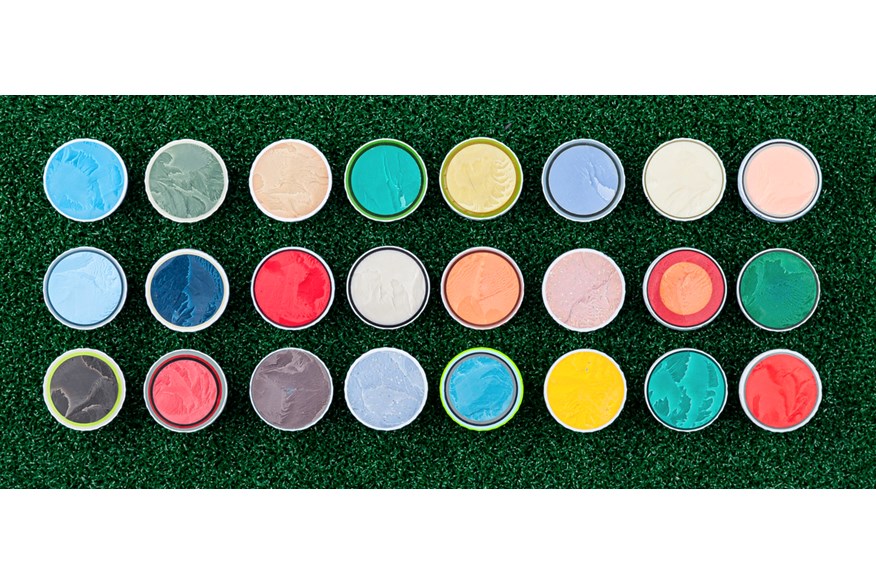
Consistency
One other thing tour pros demand is consistency.
The realities of mass manufacturing mean that minor imperfections and discrepancies exist from one ball to the next. That’s why Bryson DeChambeau famously floats his balls in an Epsom salt solution to check their balance and discard any that don’t meet his exacting standards.
Most pros don’t do that, but when the margins are so fine and the stakes so high, they do need every ball they use to be as close to identical as possible.
To measure consistency, each part of the Robot Test is done 12 times, with each ball only hit once. That means a brand new Wilson Staff Model golf ball is hit with a driver at 115mph, and every piece of data is recorded. Then another brand new Wilson Staff Model is hit with a driver at 115mph, and every piece of data is recorded. The process is repeated 12 times. 12 times at 85mph, 12 times at 100mph, 12 times at 115mph, 12 times with a 7-iron, and 12 times with a pitching wedge. That’s 60 brand new balls, all hit just once. Not only does it provide the cleanest data, it also allows us to see which golf ball models are most consistent ball-to-ball.
Remember, the robot is as consistent as it gets, and the test is done in a controlled indoors center to remove environment variables, so any changes in performance can be attributed to inconsistencies between the balls.
Both Wilson balls showed themselves to be very consistent, ranking second and joint-third of the 24 balls tested.
| Ball Speed Rank | Backspin Rank | Carry Distance Rank | Average Rank | |
| Vice Pro | 1 | 4 | 3 | 2.7 |
| Wilson Staff Model | 3 | 3 | 4 | 3.3 |
| Vice Pro Plus | 10 | 1 | 2 | 4.3 |
| Wilson Staff Model X | 2 | 6 | 5 | 4.3 |
| Seed SD 01 | 11 | 7 | 1 | 6.3 |
| Callaway Chrome Tour | 9 | 5 | 7 | 7 |
| Vice Pro Air | 5 | 8 | 9 | 7.3 |
| Titleist Pro V1x | 4 | 11 | 8 | 7.7 |
| Snell Prime 2.0 | 19 | 2 | 11 | 10.7 |
| Vice Tour | 6 | 17 | 12 | 11.7 |
| Srixon Q-Star Tour | 15 | 9 | 13 | 12.3 |
| Seed SD X1 | 12 | 20 | 6 | 12.7 |
| Callaway Chrome Tour X | 8 | 16 | 16 | 13.3 |
| Titleist Pro V1 | 18 | 10 | 14 | 14 |
| TaylorMade TP5 | 7 | 19 | 18 | 14.7 |
| Kirkland Signature V3 | 16 | 12 | 17 | 15 |
| Snell Prime 4.0 | 13 | 13 | 19 | 15 |
| TaylorMade TP5x | 17 | 18 | 10 | 15 |
| Seed SD 02 | 20 | 15 | 15 | 16.7 |
| Callaway Chrome Soft | 14 | 21 | 21 | 18.7 |
| Snell Prime 3.0 | 22 | 14 | 20 | 18.7 |
| TaylorMade SpeedSoft | 21 | 23 | 22 | 22 |
| Srixon Distance | 23 | 22 | 23 | 22.7 |
| Srixon AD333 | 24 | 24 | 24 | 24 |
Everything you need to know about the Wilson Staff Model and Staff Model X golf balls
See the standard Staff Model as an alternative to the Titleist Pro V1, and you’ll be thinking exactly along the right lines. The 2024 model has a compression of 95 which is 8.7% softer than the Staff Model X, so expect 100 RPM less driver and 300 RPM less iron spin plus a lower more penetrating ball flight.
Read our full Wilson Staff Model (2024) golf ball review.
Pros
- An impressive alternative to the Titleist Pro V1, Callaway Chrome Tour and TaylorMade TP5
- An accurate and consistent choice
Cons
- The Wilson Staff Model X offers more wedge and iron spin
| Construction | 4-Piece |
| Cover | Urethane |
| Cost per ball | $4.16 |
Price per ball $4.16 / 2.16c per yard
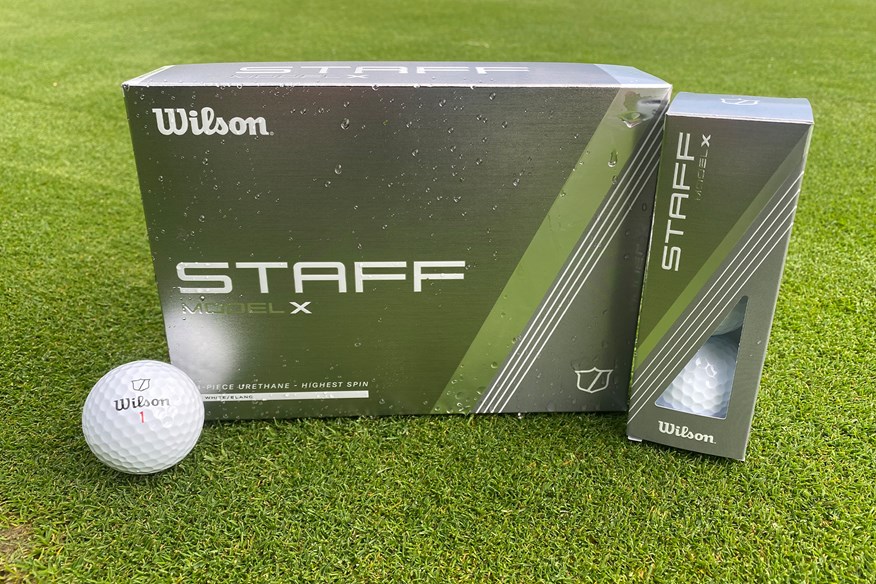

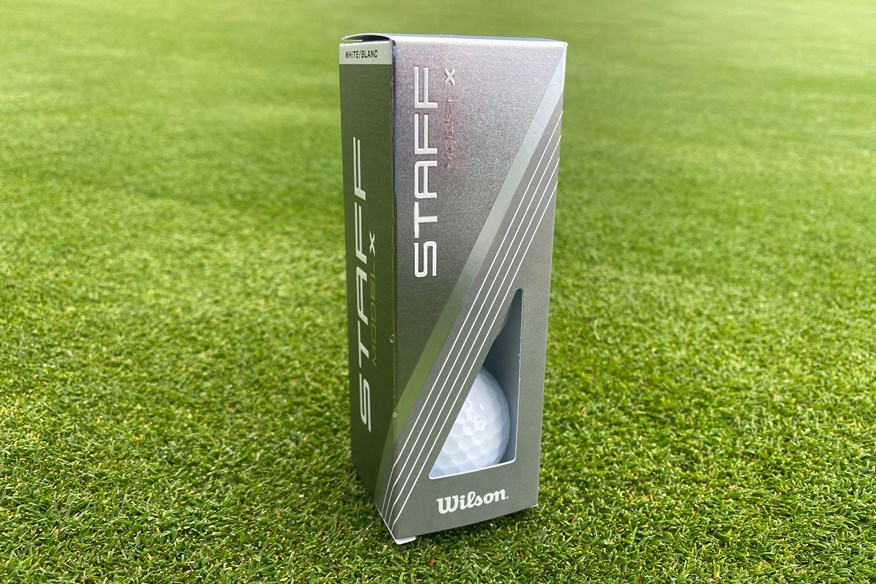
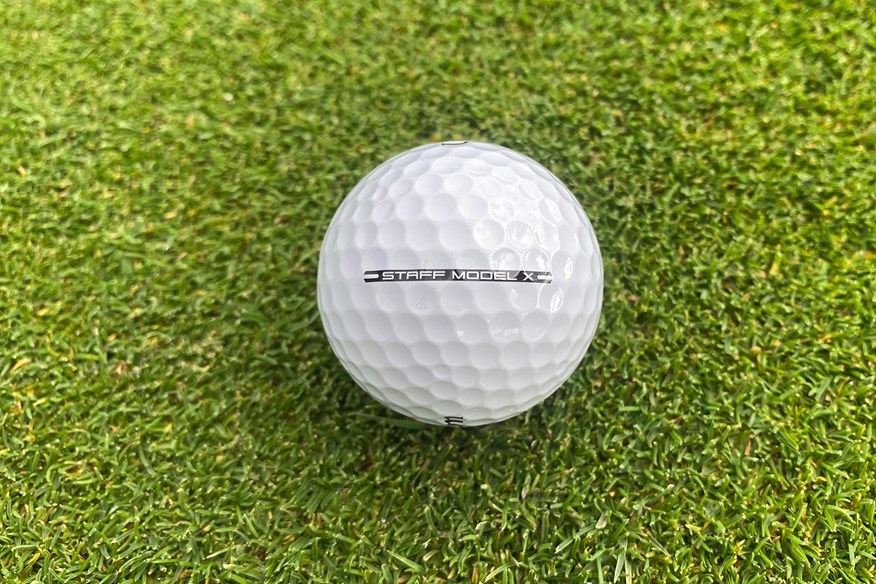
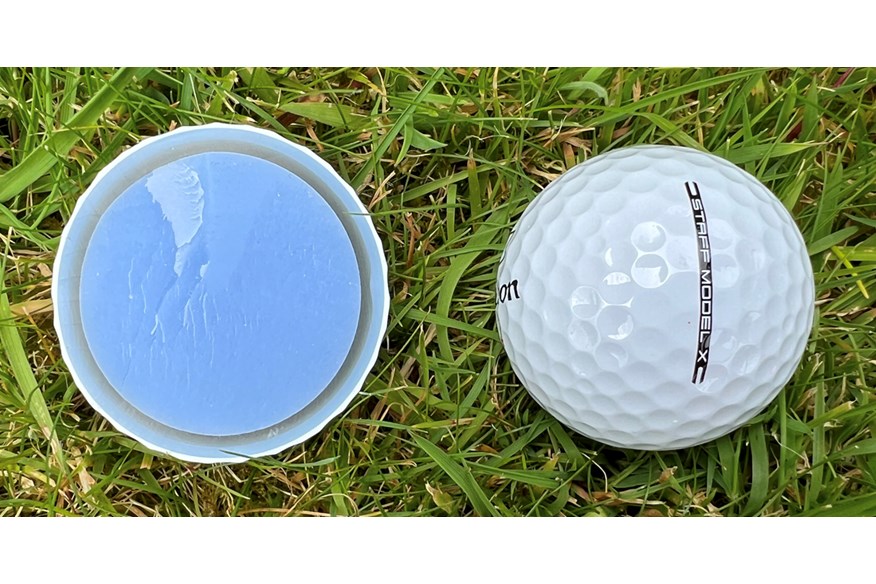
Expect a higher launch and ball flight than the standard Staff Model ball you’ll also get maximum shot shape potential from this offering. See the X as an alternative to the Titleist Pro V1x, TaylorMade TP5x, and Callaway Chrome Tour X and you’ll be thinking along exactly the right lines.
Read our full Wilson Staff Model X (2024) golf ball review.
Pros
- A very fast golf ball option
- Faster and longer than a Titleist Pro V1 and Pro V1x
- An accurate and consistent golf ball choice
Cons
- It's a shame about the price hike for 2024
| Construction | 4-Piece |
| Cover | Urethane |
| Cost per ball | $4.16 |
READ MORE: Best golf balls
